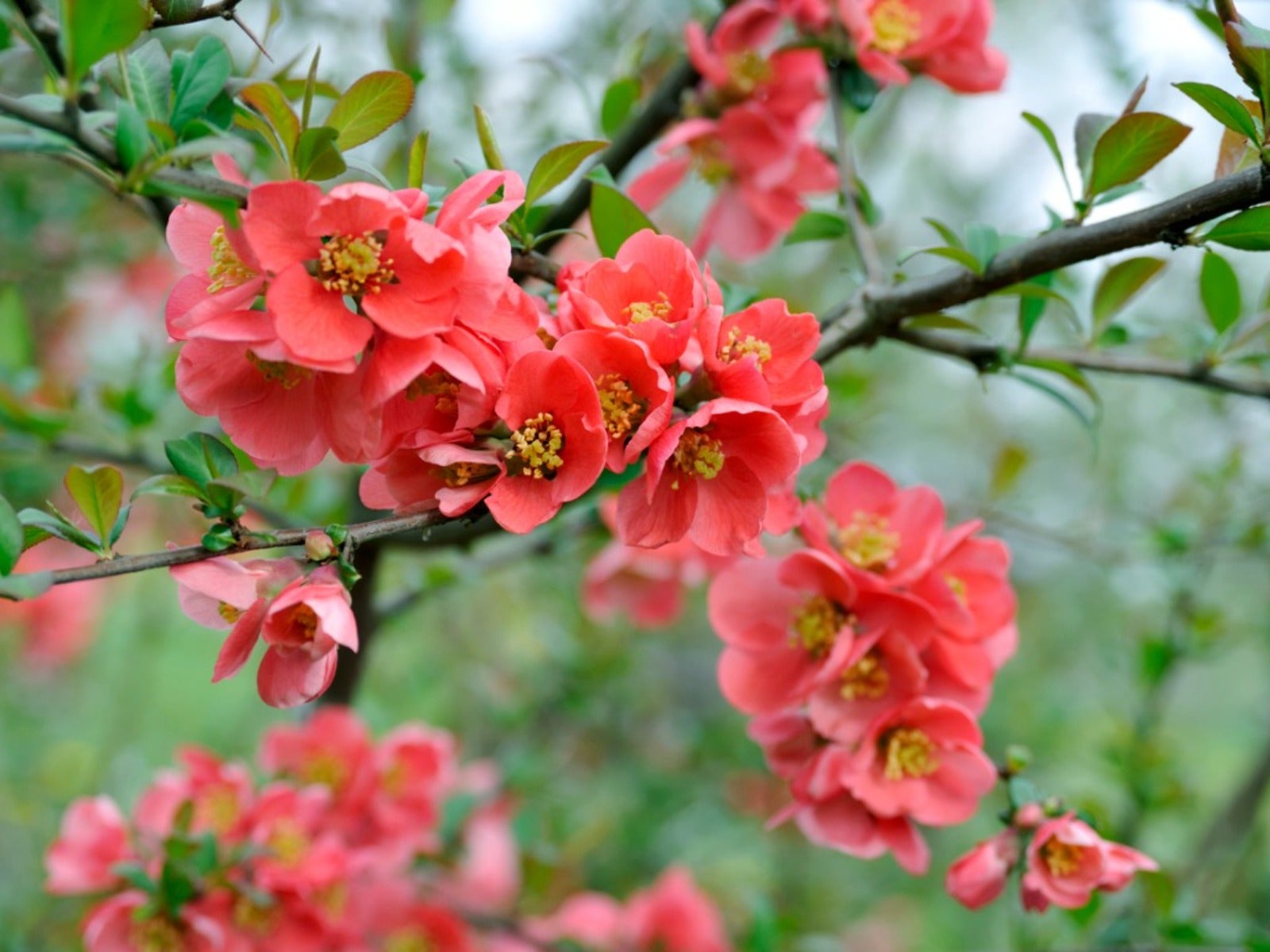Common Flowering Quince Diseases And Pests


Quince is an easy-to-grow deciduous shrub that offers bright colored blossoms. Many consider its worst issue the impressive thorns grown by some varieties. But the plant also suffers from some fungal diseases, as well as fireblight, and scab. It is particularly vulnerable to aphids too, and scales and mites are listed among quince pests. For more information about the common diseases and pests of flowering quince, read on.
Flowering Quince
Flowering quince (Chaenomeles speciosa) is a dense, rounded, deciduous shrub that can grow to a mighty wall, 10 feet by 10 feet (3 m). The plant, native to China and Tibet, has spiny twigs that tangle up easily, as well as five-petaled blossoms in scarlet, or occasionally pink or white. These are extremely showy since they light up the tree while its leaves are still bare of leaves in spring.
Flowering quince’s blossoms develop into edible fruits which have given the plant its botanical name. Its genus name “Chaenomeles” comes from the Greek words chaino, meaning to gape, and melon, meaning an apple. This was based on the inaccurate belief that the fruits split open when ripe.
In fact, the fruits are hard and bitter right off the tree. They mellow out into delicious food when cooked into jams and jellies. The flowering quince leaves are attractive, a dark, shiny, forest green with finely-toothed edges.
Flowering Quince Diseases
Although quince isn’t any more susceptible to problems than any other shrub, fungal quince diseases can defoliate the plant. Fungal leaf spot can be troublesome, especially in times of heavy rain in spring. And other fungal diseases, like apple scab, cedar-quince rust, and wood rots make a gardener’s life difficult in wet areas.
Other flowering quince diseases include scab and fire blight (caused by bacteria). Keep your eye out for a watery, light tan ooze that exudes from fire blight cankers (areas of dead bark) on branches, twigs, or trunks. and scab.
On the other hand, don’t stay up nights worrying about this. Flowering quince plants are pretty indestructible and usually make it through without too much damage. They can tolerate both heat and chill, but do best in areas of full sun.
Sign up for the Gardening Know How newsletter today and receive a free copy of our e-book "How to Grow Delicious Tomatoes".
Flowering Quince Pests
Then there are insect pests. Every gardener worth their salt can recognize aphids, those soft-bodied pests with sucking mouth parts that feast on plant foliage juices. These rarely rise to the level of serious pests, but - when it comes to quince - they can actually cause significant damage to new growth. Lesser insect pests include scale and mites.
Environmental disorders can also disrupt the peaceful life of a flowering quince. For example, if the soil in which the quince is planted has high pH, your plant might turn yellow from chlorosis. Early spring frosts can damage and even kill buds. And too little or too much soil moisture can damage the appearance, development, and growth of the quince.

Teo Spengler is a master gardener and a docent at the San Francisco Botanical Garden, where she hosts public tours. She has studied horticulture and written about nature, trees, plants, and gardening for more than two decades, following a career as an attorney and legal writer. Her extended family includes some 30 houseplants and hundreds of outdoor plants, including 250 trees, which are her main passion. Spengler currently splits her life between San Francisco and the French Basque Country, though she was raised in Alaska, giving her experience of gardening in a range of climates.